A few weeks ago, we headed down into southern Snowdonia to explore the Dysynni Valley beneath the striking Cadair Idris mountain, and what we found became an instant favourite. Last weekend we went back to see more of the valley, with its majestic peaks, its ancient temperate woodland run through with silver waterfalls, and, of course, its utterly irresistible castle.

The rocky mound of Castell y Bere
Spread across the summit of a remote rocky outcrop in the foothills of Cadair Idris, Castell y Bere is the perfect space to take a break from today’s mad world. For a precious hour or two, you can soak up the stillness and staggering views, commune with nature and quietly chew the cud over a leisurely picnic with your loved ones among the tranquil ruins. It’s a place where time stops, where our blood pressure reduces while our contentment soars.
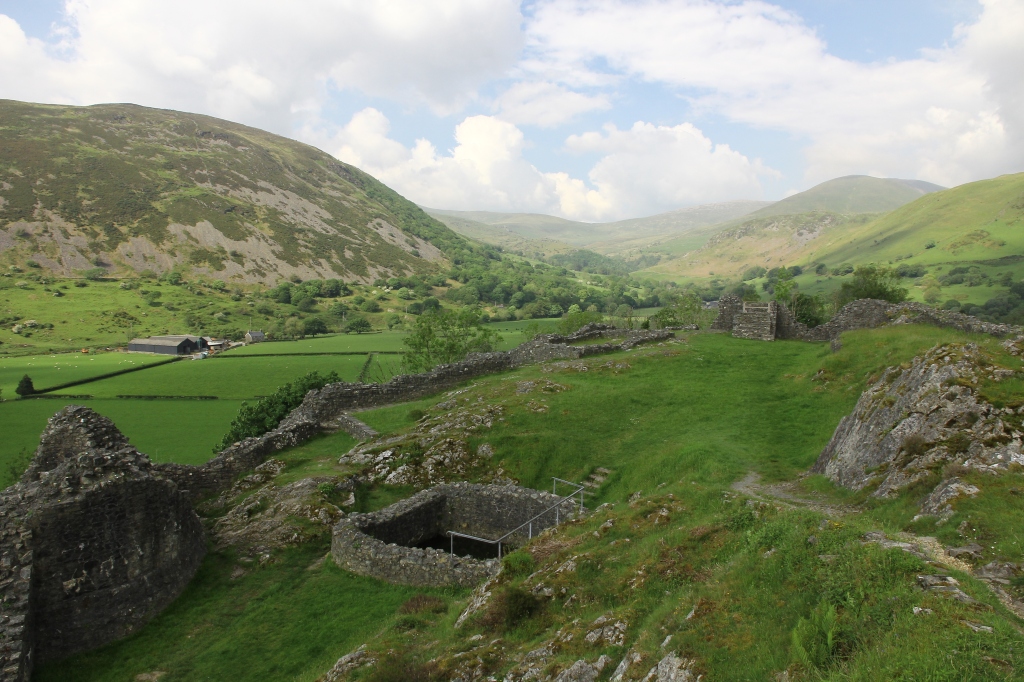
The perfect place to destress…
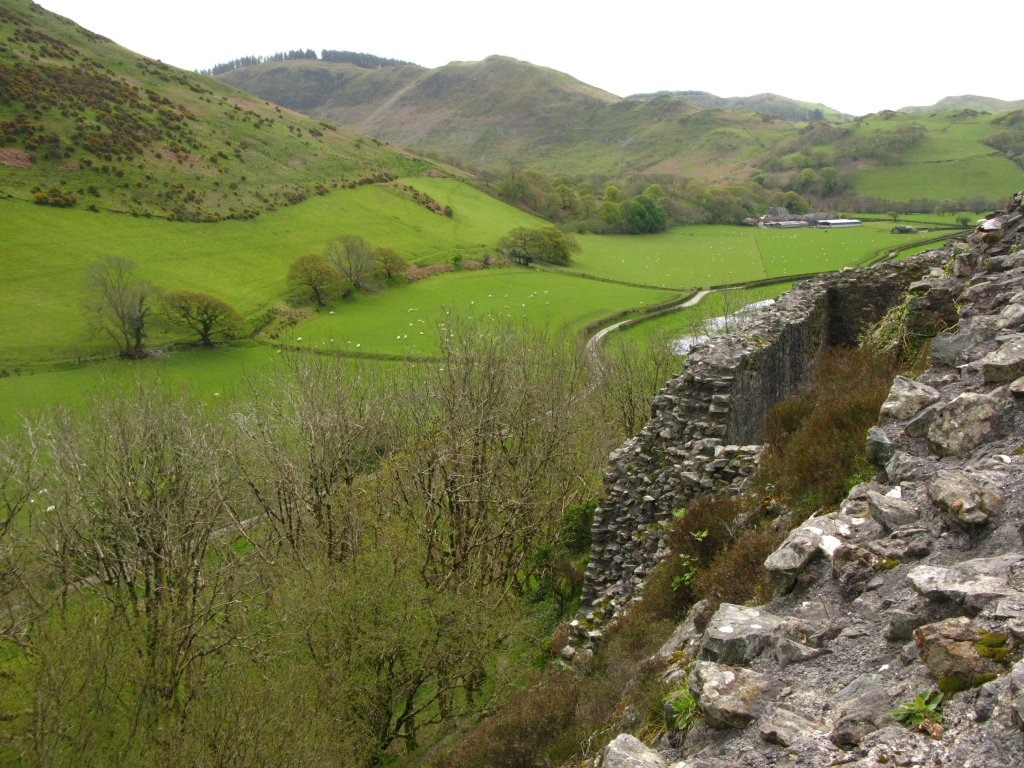
…peace and beauty as far as the eye can see…
Believed to have been built from around 1221 by the powerful prince of Gwynedd, Llywelyn the Great (d.1240), the castle was a key outpost in the Welsh ruler’s expanding territories. It may have been remote, but this was the top spot in terms of security. Not only did it guard the southern edge of Llywelyn’s homeland of Gwynedd and control the main routeway from the nearby coast northwards through the mountains, it also dominated the neighbouring lordship of Meirionydd. In fact, so important was this parcel of land to Llywelyn and his ambitions that he pinched it from his son, Gruffudd, and ‘began to build a castle there for himself’. At this time, the ever-encroaching Anglo-Norman lords were building impressive stone castles to assert their authority and status in parts of Wales, and Llywelyn needed to compete with his own show of strength. Castell y Bere was to be his showpiece, and thus it became the greatest and most complex fortress of the princes of Gwynedd.

Castell y Bere, like most Welsh castles, was constructed to fit the topography of it’s rocky site. From this aerial view, we can see the elongated D-shaped towers at each end, a characteristic feature of Welsh castles.
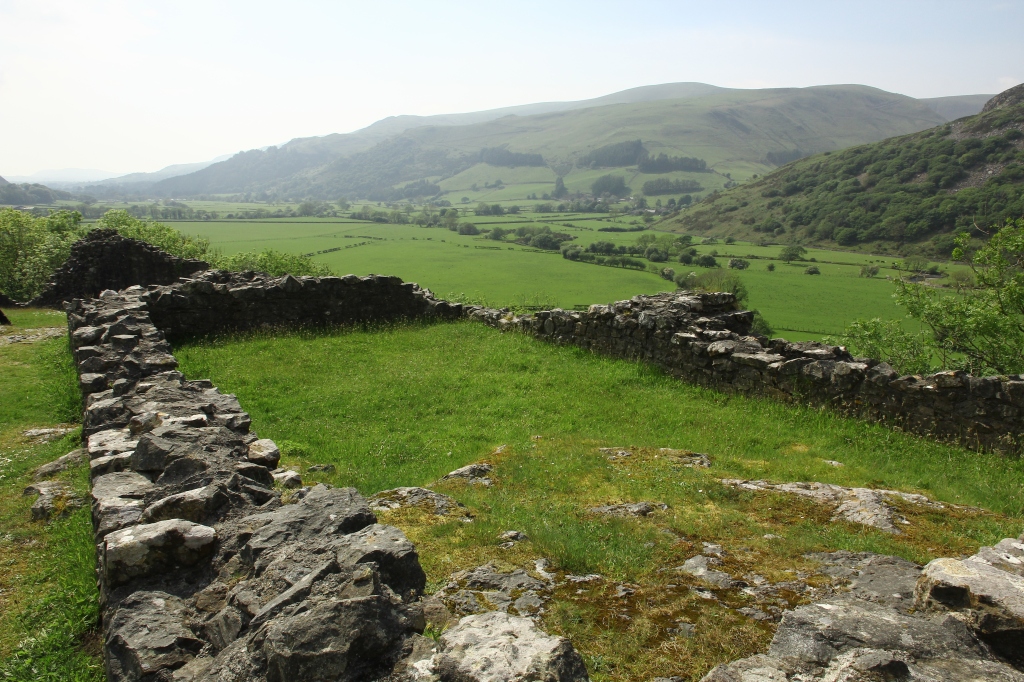
Looking south across one of the castle’s inner buildings.

The D-shaped North Tower housed fine accommodation befitting the status of a prince. From this ground floor cellar we can see the base of a stone pillar that would have continued up through the low wooden ceiling to support a fire in the great hall above.

In the entrance to the South Tower, which would have housed another fine first-floor apartment.
The crucial construction site took advantage of the natural defences offered by the rocky slopes, which Llywelyn supplemented on the weaker sides with rock-cut ditches. The castle itself was also well fortified, with a formidable triple-ditch entrance protected by two gatehouses containing drawbridges, and four two-storeyed internal towers with thick masonry walls. But aside from matters of security, there was another reason why Llywelyn chose to build at this prime location, and that had more to do with cattle than command.
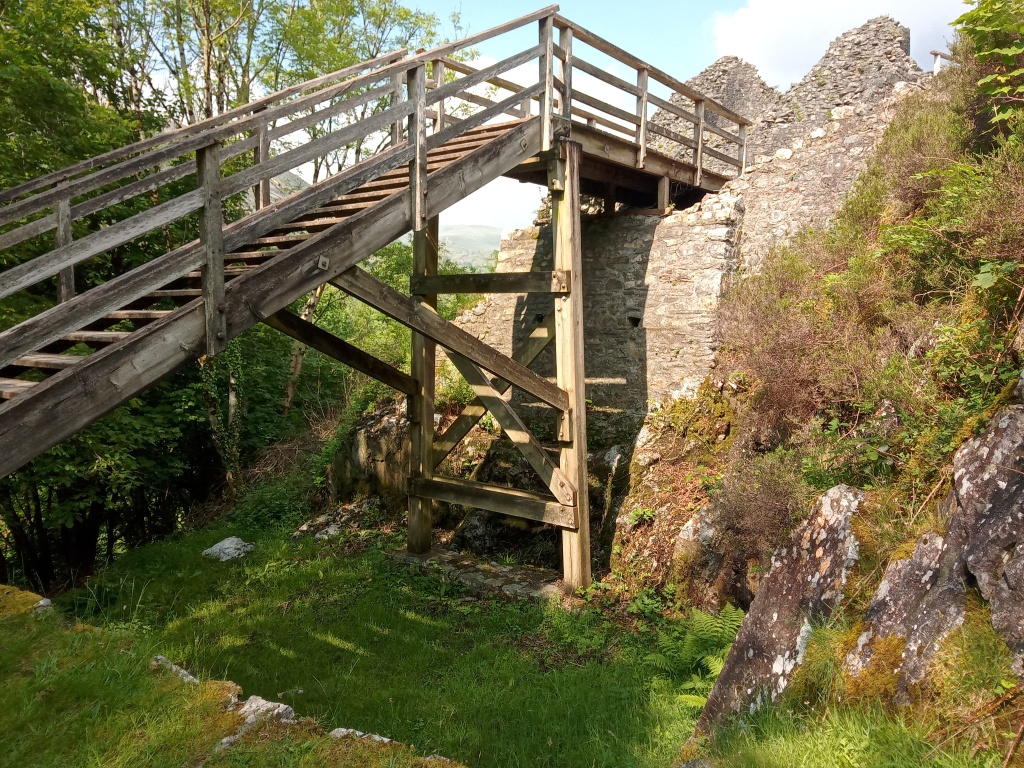
Modern steps span one of the formidable ditches protecting the castle’s entrance.

The well-defended entrance, which originally had three substantial ditches (one now filled to make the modern approach path) and two gate towers housing drawbridges.
As Llywelyn would have been painfully aware, lush pasture was rare in the harsh mountainous territory of Gwynedd, but here was an ideal green space to graze livestock. In medieval Wales cattle meant cash, so keeping his animals well fed all year round in the verdant meadows of the Dysynni Valley would bring Llywelyn wealth and prosperity, and thereby the means to build his castles in stone.
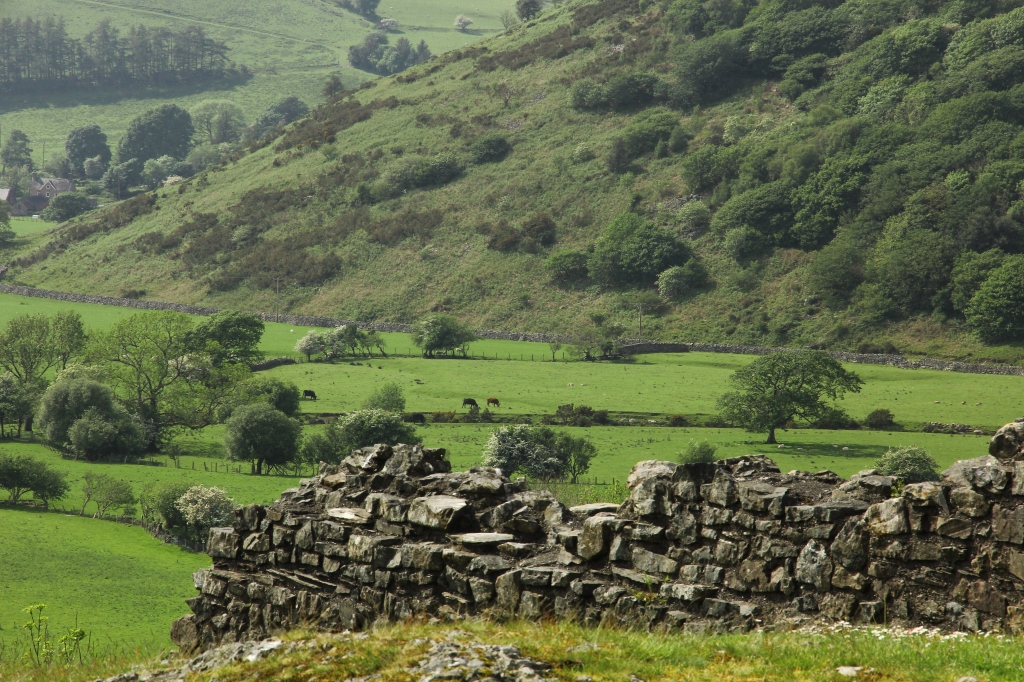
Ideal pastureland for a royal cattle herd (spot the cows!)
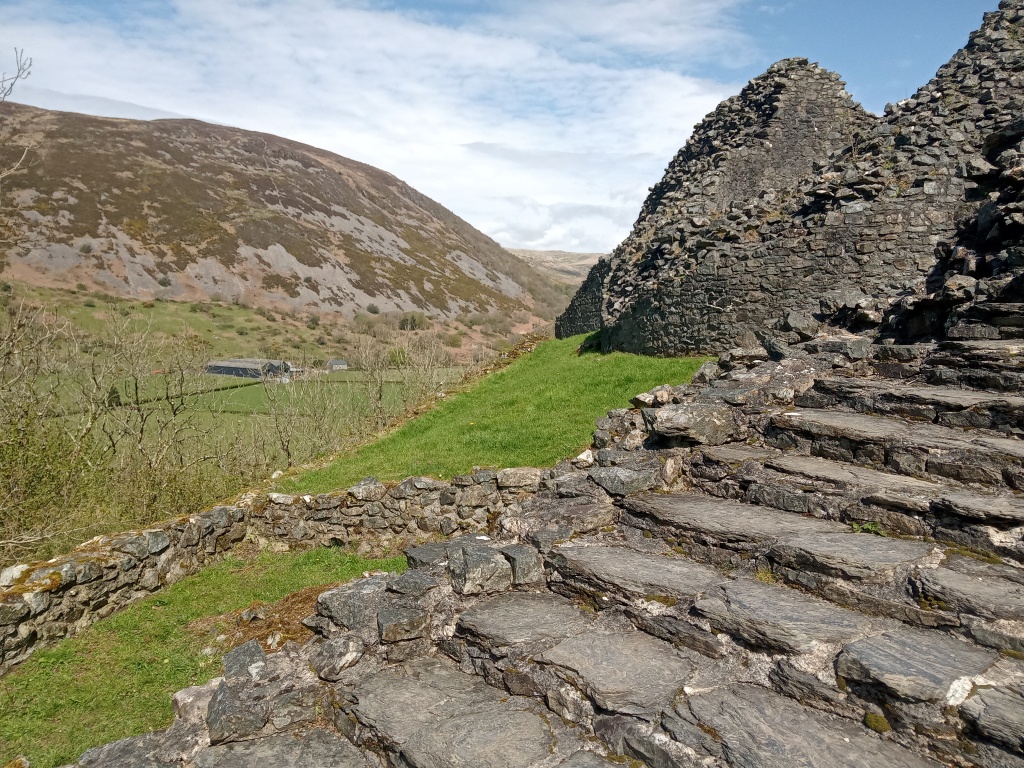
Prosperity from livestock meant that Llywelyn could build his castles in stone.
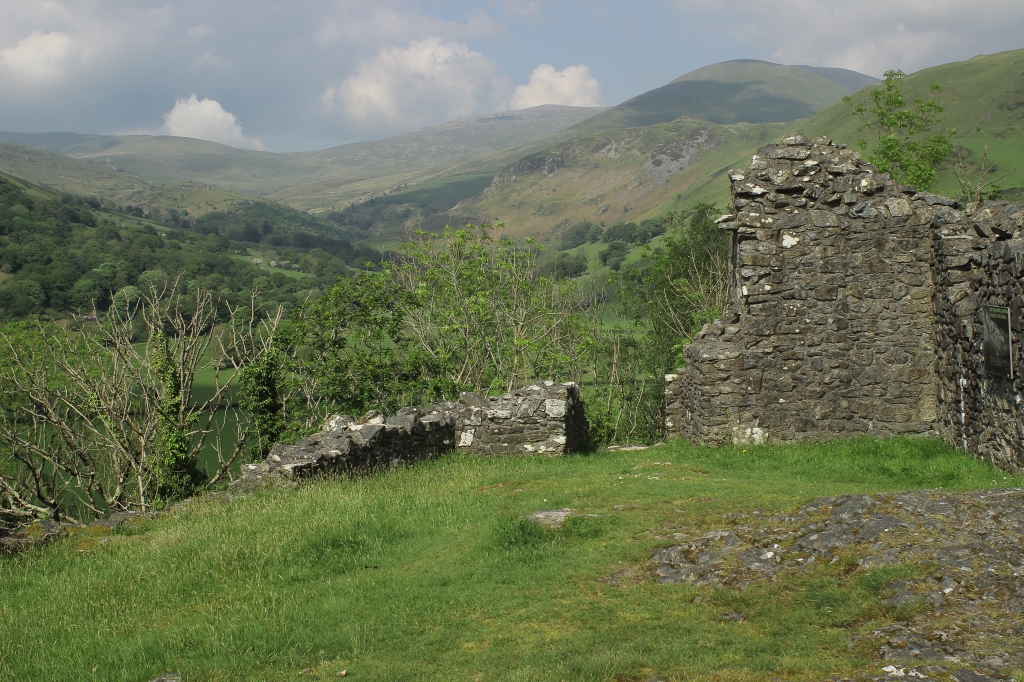
The green and pleasant land of Bere…
None of this would have been lost on King Edward Ist when he captured Castell y Bere in 1283 following his victory over Llywelyn’s grandson, Llywelyn ap Gruffudd. Impressed with the Welsh stronghold, he made provision for the castle’s security and established a small frontier town at Bere. This move was ultimately unsuccessful, but it does show Edward’s appreciation of the castle and all it had to offer. England’s greatest castle-building king knew a good stronghold when he saw it. But despite all its security and money-spinning credentials, just over a decade after Edward took over, Castell y Bere was reduced to ruins.

A view south-west across the castle courtyard. The site of the sizeable well in the foreground, which is just inside the entrance, would have been detemined by the topography of the castle rock. The distinctive, slightly squiffy hill in the distance is Bird’s Rock, a famous local landmark and site of an iron age hillfort.
In 1294 the Welsh rebel Madog ap Llywelyn led the final uprising against English rule, and by the time Edward had quashed the revolt the following year the prized Welsh castle was a ragged and broken shell. It was never reoccupied, but left to its fate in the secluded outer reaches of Llywelyn the Great’s former dominions.
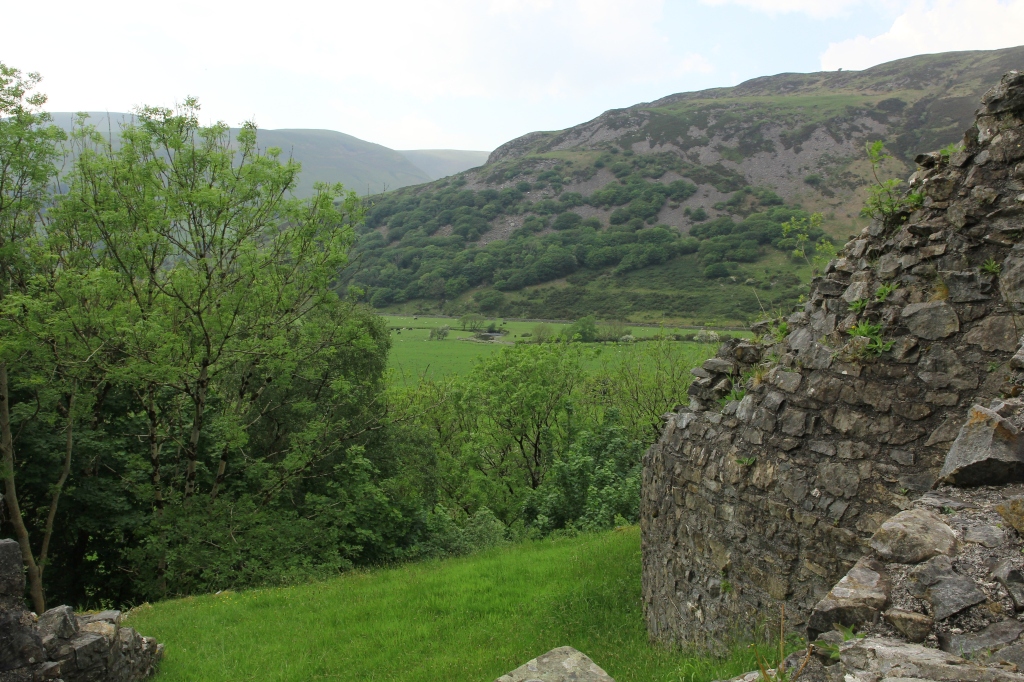
The castle was left to its ruinous fate by the end of the thirteenth century.
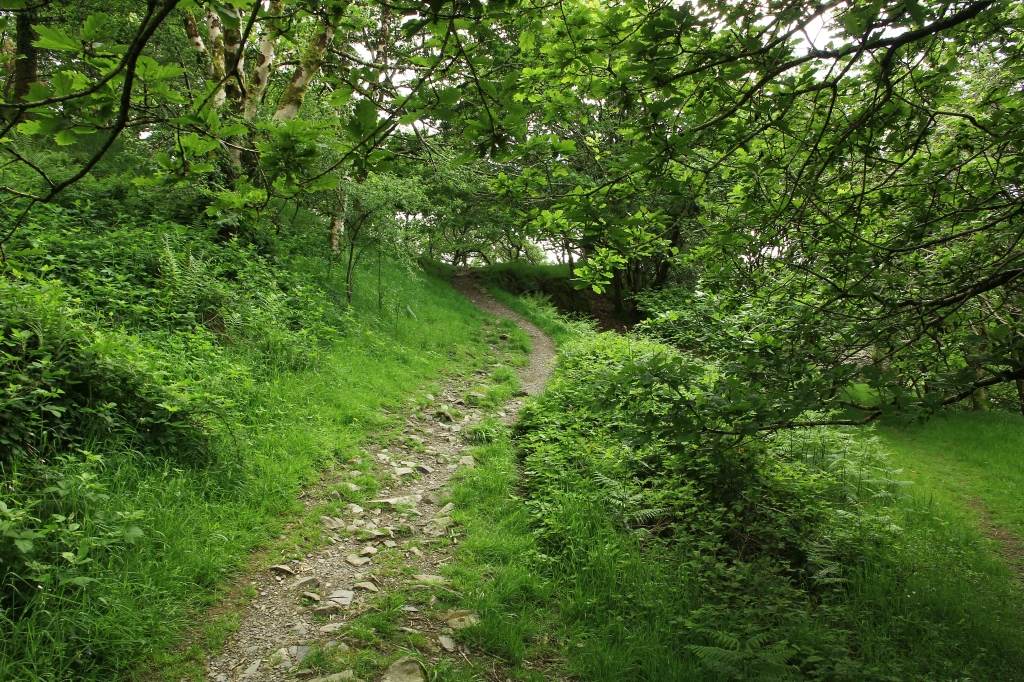
The wonderful woodland path that leads around the outcrop to the castle…
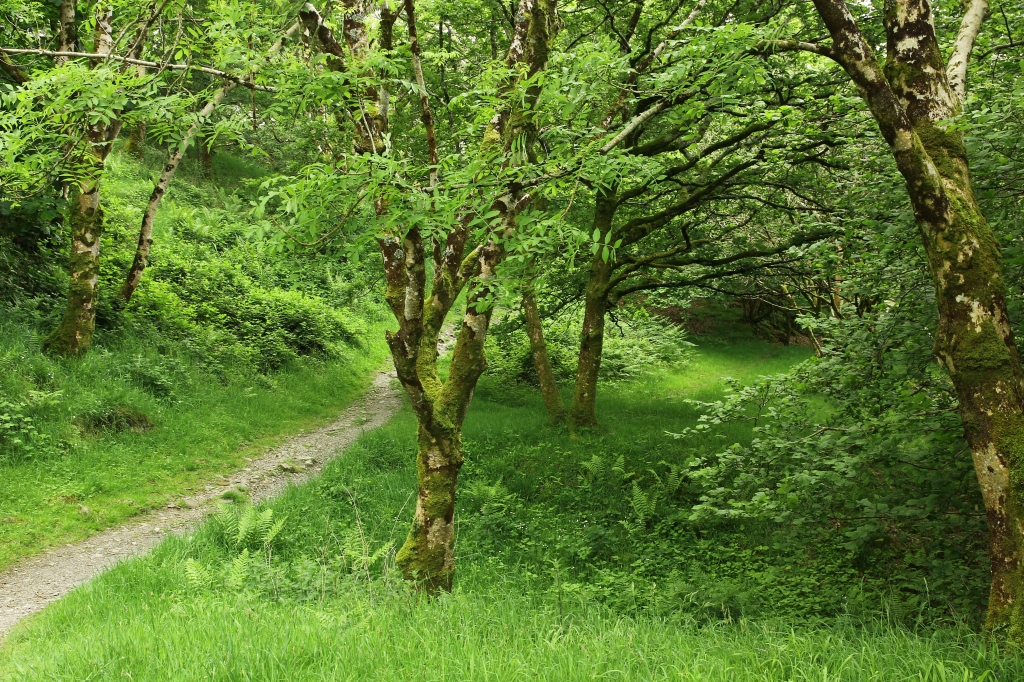
The picturesque remains of Castell y Bere now hide within a leafy cloak of woodland that grows on the rocky slopes below. But there’s just enough of the buildings left to be able to appreciate the full layout, with its distinctive Welsh features and ample remnants of its solid defences. And the tranquil setting is just as sublimely bucolic today as it was back in Llywelyn’s time. The ancient walls are still keeping watch over the vast green basin below, where sheep and cattle graze peacefully on the rich pastureland, just as they would have done nearly 800 years ago.
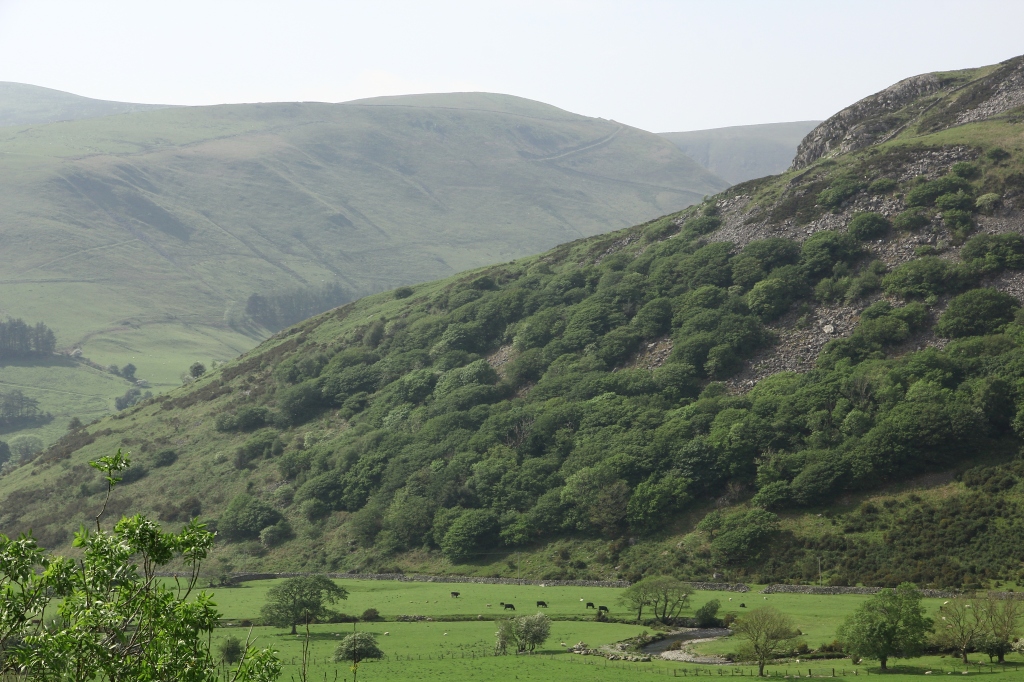
Fascinating bit of history and what a stunning location.
LikeLiked by 1 person
Thanks John, glad you liked it. It’s hard to convey the true sense of peace and history of the place online, but it truly is like a slice of heaven. I think of all the Welsh castles I’ve been to – and there really are some stunning ones – this one in it’s idyllic setting has to be my favourite.
LikeLiked by 1 person
It really is a truly magical place isn’t it? I don’t think it can be beaten for location. I’ve enjoyed both of our visits there immensely and would always be happy to go back – on a sunny day, with a glass of Pimms – magical.
Another wonderful post my love.
LikeLiked by 1 person
It is magical. To me it could almost be a portal into another, unspoiled world. I definitely feel better when we’re there. Pimms yes, but don’t forget the mead! 😀 I’d just have to go easy over those big ditches on the way down! 🙂
LikeLiked by 1 person
What, Mead and PIMMS? Forget the ditch, I doubt I’d make it down that wobbly staircase! 😀
LikeLike
This really does look like a fabulous location Alli. Snowdon and the surrounding area is bound to attract large numbers of people, but the area around Cader Idris and Tal-y-Llyn is also beautiful, but in a different way. I’d be surprised if anybody reading this captivating post and looking at these wonderful images doesn’t now give Snowdonia a break and follow your footsteps to magical Castell-y-Bere instead.😊
LikeLiked by 1 person
Thank you, Malc. 🙂 You inspired me to do this post in your last email, for which I thank you and will drop a line back before next Tuesday. I’m glad you approve of Castell y Bere and my attempt to portray it’s really rather magical feel. I think if I could restore and live in any castle at all, I’d chose this one. It really is the perfect place to de-stress and absorb the history. 🙂
LikeLiked by 1 person
I’m pleased to hear that I’ve still got some uses then Alli 😊 I can see why you would like to restore this place and live there if you could. It’s got your name written all over it. Talking of restoring castles, my final part of Cardiff Castle will soon be ready, and although I know you’re not keen on castles that have been over-restored, I hope you’ll still read it because Cardiff and its castle had a unique history during the Victorian period – and after all, it is your capital city now 😊
LikeLiked by 1 person
You inspire me more than you think, Malc. 🙂 Looking forward to your Cardiff Castle post already. Even if it’s Victorian, a good story is a good story. 🙂
LikeLiked by 1 person
Thanks Alli 🤗
LikeLiked by 1 person
First, I love the way they have set up the ruins so you can visit them without difficulty. I remember doing some really dangerous clambering around on digs and trying not to wonder if the whole thing was going to collapse on top of me. That’s great construction so that those who aren’t able to clamber up ancient stone steps can manage.
The stronghold may be gone, but blessed be the cattle who live on, still enjoying the rich grassland. It looks like a perfect place to just hang out and be at peace.
LikeLiked by 1 person
That’s a great point about access, Marilyn. They do seem to be pretty good at that in Wales. 🙂
I really love your comment about the cattle. Spot on, I couldn’t have put it better myself. It really is the perfect place to chill, and I think we all need somewhere like this to escape to these days. 🙂
LikeLike
What a stunning location and castle. Looks a lovely walk up to it as well. I feel bad that I’ve probably driven past it lots of times intent on doing, or tired after having done, Cadair Idris and looked at it but not visited. I’ll definitely put that right on my next visit to the area!
By the way, I think you missed getting a notification on my latest post? the 21 Birkett Challenge!
LikeLiked by 1 person
Thanks Carol. I think you’d definitely like Castell y Bere, and if you have driven past it without realising you could easily be forgiven as from the road it just looks like a hill covered in trees. It’s so worth going there though, so you won’t regret putting it on your list for next time. So you’ve done Cadair Idris too? How does that rank among the other peaks you’ve scaled? It looks amazing, and the legend is great (and the film of it on the website is very funny!).
I jumped straight over to your website to read about your 21 Birkett Challenge, and as you’ll see, I’ve un and resubscribed in the hope of clearing whatever’s amiss at the moment. As I said on your site though, well done on another excellent challenge! 🙂
LikeLike
Is Castell y Bere signposted from the road do you know? I’ve heard of it but don’t remember seeing any signs for it and I’ve driven past Craig y Deryn (Bird Rock) quite a few times!
I’ve done Cadair Idris from the south and north a couple of times each – once including the whole ridge in each direction. It’s a really great hill – I think I like both sides equally.
Sorry if this comment appears twice but I’m having trouble commenting – WordPress will insist on changing everything all the time!
LikeLiked by 1 person
Good question, Carol. I had to ask Stuart about the signposting from the road as I couldn’t remember, but yes it is. It’s signposted as a right hand turn in the centre of the village of Abergynolwyn on the B4405 through the Dysynni Valley, just before you get to the Railway Inn also on the right (and there’s a lovely little community cafe set back on the left too). You drive out of the village up into the hills and after a couple of miles or so there’s another sign for the castle on the right and it’s along that road. There’s a pull in with several car parking spaces by the castle rock and a noticeboard by the gate. Lovely walking around there too. I think you’d love it.
I wondered whether you’d have done Cadair Idris. I’d like to do it one day too. Looks amazing.
And don’t worry about the comment thing – as we’ve gathered from the problems I’ve been having with your site communicating with me, WordPress has some interesting foibles. I suppose we’ll just have to work around them. 🙂
LikeLike
‘Interesting foibles’ – yep, that’s what I’ve been calling them while I struggle to answer your answers! 😉
Thanks for the info on how to get there and the car parking. Definitely one to visit next time I go to Snowdonia.
LikeLike
I remember visiting this castle very many years ago and loving the setting, as I did all of the landscape around Cadair Idris. But I don’t think I ever knew this much of its history, including the link to cattle and thus to wealth- very interesting! And it’s surprising really that anything much remains if it was ruined so many centuries ago.
LikeLike
This is so very beautiful.
LikeLiked by 1 person
Thank you, Martha! It truly is. History and nature in perfect harmony. 🙂
LikeLiked by 1 person